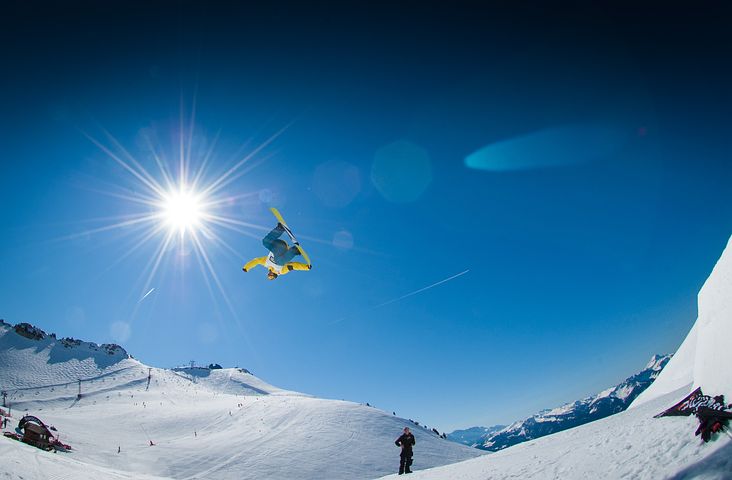General Rules of Skysurfing
As you prepare to take flight in the realm of skysurfing, remember that the sky is your canvas, and your board is the brush that paints the exhilarating dance between gravity and freedom. But before you leap into this awe-inspiring experience, there are crucial rules and guidelines that will ensure your safety and success in this high-flying sport. Stay tuned to uncover the essential techniques and strategies that will elevate your skysurfing journey to new heights.
Equipment Essentials
When preparing for skysurfing, you must ensure you have the necessary equipment essentials in place. Safety precautions are paramount in this exhilarating sport. Regular gear maintenance is crucial to guarantee optimal performance and reduce the risk of malfunctions during your flight. Ensure your parachute is meticulously inspected, your harness is secure, and your helmet fits correctly.
Training programs are essential for skill development and proficiency in skysurfing. Enroll in reputable courses to learn the proper techniques for takeoff, aerial maneuvers, and landing. Practice regularly to enhance your abilities and build confidence in your skills. Familiarize yourself with emergency procedures to handle unexpected situations safely.
Skysurfing offers a sense of freedom and excitement, but it is vital to prioritize safety at all times. By following meticulous safety precautions, maintaining your gear, and investing in training programs, you can enjoy the thrill of skysurfing while minimizing risks. Remember, preparation is key to a successful and enjoyable skysurfing experience.
Pre-Jump Safety Checks
Before launching into the exhilarating world of skysurfing, it is crucial to conduct thorough pre-jump safety checks. Ensure your gear is in optimal condition by performing a detailed inspection of your equipment. Additionally, verify your body position is correct to maintain stability and control throughout your skysurfing experience.
Gear Inspection
Have you thoroughly inspected your gear to ensure it is in optimal condition for the jump? Skysurfing demands meticulous gear maintenance and adherence to safety protocols. Before taking the leap, follow these key steps:
- Check Parachute System: Verify all buckles, straps, and connections are secure and free of damage.
- Inspect Board Stability: Ensure your skysurfing board is firmly attached to your feet and can withstand the intense wind forces.
- Examine Altitude Altimeter: Confirm that your altitude altimeter is functioning correctly to track your descent accurately.
Body Position Check
Ensure your body position is aligned and stable before initiating the jump to maintain control throughout the skysurfing experience. Proper alignment is crucial for maintaining aerial control during your jump. Here is a simple pre-jump body position check to ensure you are ready for the thrill of skysurfing:
| Body Position Check | Description |
|---|---|
| Head | Ensure your head is in line with your body, facing forward to maintain balance. |
| Arms | Keep your arms extended and parallel to the ground for stability during freefall. |
| Legs | Check that your legs are straight and aligned with your body to minimize air resistance. |
Body Positioning Techniques
To achieve optimal stability while skysurfing, maintain a straight and rigid body position throughout your descent. Ensuring proper alignment and weight distribution is crucial for a successful skysurfing experience. Here are key body positioning techniques to help you soar through the sky with confidence:
- Head Position: Keep your head in line with your body, looking straight ahead to maintain balance and reduce drag.
- Arm Placement: Extend your arms out to the sides, parallel to the ground, to act as stabilizers and help control your movement.
- Leg Alignment: Position your legs close together and slightly bent at the knees to minimize air resistance and enhance maneuverability.
Communication Signals
Maintaining clear and effective communication signals is essential for coordinating movements and ensuring safety while skysurfing. Communication signals can be conveyed through various methods such as hand signals, radio communication, visual cues, and body language communication. Utilizing these signals helps skydivers to stay connected and informed during the exhilarating skysurfing experience.
Below is a table summarizing the key communication signals used in skysurfing:
| Type of Communication | Method | Description |
|---|---|---|
| Hand Signals | Specific gestures with hands | Used for indicating directions or actions |
| Radio Communication | Verbal messages over radio devices | Enables communication between skydivers and ground control |
| Visual Cues | Non-verbal cues through movements | Helps in signaling without the need for words |
Mastering these communication methods is crucial for effective teamwork and ensuring a safe and enjoyable skysurfing adventure. By staying attuned to these signals, you can enhance coordination and make the most out of your skysurfing experience.
Landing Strategies
For successful landings in skysurfing, precise execution of designated landing strategies is paramount. When preparing to touch down after an exhilarating flight, consider the following key factors:
- Landing Techniques: Mastering proper landing techniques is essential for a smooth touchdown. Practice approaches that involve a gradual descent, allowing for controlled contact with the ground.
- Wind Direction: Always be mindful of the wind direction when planning your descent. Adjust your approach to align with the wind flow, ensuring a stable and predictable landing.
- Safety Precautions and Body Alignment: Prioritize safety by maintaining the correct body alignment throughout the landing process. Keep your body straight, with knees slightly bent to absorb the impact upon touchdown.
Weather Conditions Awareness
Before taking to the skies for skysurfing, it is crucial to pay close attention to wind speed considerations and cloud cover monitoring. Wind speed can greatly impact your ability to control your board and maintain stability during your descent. Additionally, monitoring cloud cover is essential for assessing potential changes in weather conditions that could affect your flight.
Wind Speed Consideration
When determining wind speed consideration for skysurfing, be sure to assess the weather conditions meticulously. Understanding the wind speed is crucial for a safe and enjoyable skysurfing experience. Here are three key factors to consider:
- Wind Direction: Always be aware of the wind direction to ensure proper takeoff and landing techniques. Adjust your position accordingly to maintain control throughout the flight.
- Safety Precautions: Adhere to all safety guidelines and regulations regarding wind speed limits. Avoid flying in excessively high winds to prevent accidents and injuries.
- Altitude Adjustment: Depending on the wind speed, you may need to make altitude adjustments to control your movement effectively. Stay vigilant and responsive to changes in wind speed during your skysurfing session.
Cloud Cover Monitoring
Monitoring cloud cover is essential for skysurfers to assess weather conditions accurately before taking flight. Clouds can indicate potential changes in air pressure and temperature, affecting skydiving altitudes and parachute deployment. Here's a breakdown of cloud cover types and what they mean for your skysurfing adventure:
| Cloud Cover Type | Description | Impact on Skysurfing |
|---|---|---|
| Clear Skies | No clouds visible | Ideal conditions for skysurfing |
| Scattered Clouds | Small clouds spread out | Minor impact, generally safe for skysurfing |
| Overcast | Complete cloud cover | Reduced visibility, potential need for altitude adjustments |
| Cumulonimbus | Large, towering clouds with anvil shape | High risk due to turbulence, avoid skysurfing |
Stay vigilant and adjust your plans accordingly based on the cloud cover to ensure a safe and enjoyable skysurfing experience.
Emergency Procedures
In the event of an emergency while skysurfing, swiftly assess your surroundings and equipment before taking any action. It is crucial to stay calm and follow these key steps:
- Check Your Altitude: Evaluate your altitude to determine if you have ample time to address the emergency situation. If you are too low, prioritize deploying your reserve parachute.
- Evaluate Your Speed: Assess your speed to determine if you need to make adjustments to stabilize your descent. Maintaining control over your speed is essential for a safe landing.
- Review Emergency Landing Techniques: Familiarize yourself with emergency landing techniques such as the PLF (Parachute Landing Fall) to minimize the impact on landing. Practice these techniques regularly to ensure readiness in case of an emergency.
Physical Fitness Requirements
To ensure optimal performance and safety while skysurfing, maintaining a high level of physical fitness is imperative. Proper nutrition requirements are essential to fuel your body for the demands of skysurfing. A balanced diet rich in carbohydrates, proteins, and healthy fats will support your energy levels and muscle recovery. Hydration is also crucial; drink plenty of water to stay hydrated before, during, and after your flights.
Incorporating a structured training regimen into your routine will help enhance your overall fitness level. Focus on building strength, agility, and flexibility through exercises that target core muscles and improve balance. Additionally, implementing stretching exercises into your pre-flight routine can help prevent injuries and improve your range of motion during maneuvers.
Cardiovascular endurance is key for sustaining long flights and performing aerial tricks with ease. Engage in activities such as running, cycling, or swimming to boost your heart health and stamina. Remember, a strong and fit body is not only beneficial for your performance but also plays a vital role in ensuring a safe and enjoyable skysurfing experience.
Legal Regulations
Adhering to legal regulations is crucial for ensuring the safety and compliance of skysurfing activities. When engaging in this exhilarating sport, it is essential to be aware of the following:
- Safety Regulations: Understanding and following safety regulations set forth by governing bodies is paramount. These regulations are designed to protect both you and others in the airspace, ensuring a safe and enjoyable experience for all participants.
- Airspace Restrictions: Familiarize yourself with airspace restrictions in your area to avoid any legal complications. Different regions may have varying rules regarding altitude limits, flight paths, and designated areas for skysurfing. By adhering to these restrictions, you not only stay within the legal boundaries but also contribute to the overall safety of the sport.
- Compliance Checks: Regularly check for updates or changes in legal regulations related to skysurfing. Staying informed and compliant with the latest rules and guidelines will help you avoid unnecessary risks and legal issues during your flights.
Advanced Tricks and Tips
Having a solid grasp of advanced skysurfing tricks and tips enhances your skills and elevates your performance in the sport. To truly excel, mastering aerial acrobatics and freestyle maneuvers is essential. These advanced techniques require precision, focus, and practice to execute flawlessly. Below is a table outlining some advanced tricks and tips to help you push your skysurfing abilities to the next level:
| Trick/Tips | Description |
|---|---|
| Backflip | Perform a backward rotation while in the air, maintaining control throughout the maneuver. |
| Barrel Roll | Execute a sideways roll while maintaining stability and control during the rotation. |
| Corkscrew | Perform a twisting motion while in the air, keeping the board steady throughout the spin. |
| Frontside 360 | Rotate the board 360 degrees in a forward direction, ensuring a smooth and controlled turn. |
| Double Grab | Grab both edges of the board simultaneously during a jump, demonstrating style and skill. |
Mastering these advanced tricks will not only impress spectators but also challenge you to continuously improve your skysurfing abilities. Remember, practice and dedication are key to achieving perfection in these intricate maneuvers.
Frequently Asked Questions
Can Skysurfing Be Done in All Types of Weather Conditions?
Yes, skysurfing can be done in various weather conditions, but certain safety precautions must be followed. Wind speeds, equipment maintenance, and cloud cover are critical factors to consider for a successful and safe experience.
How Long Does It Typically Take to Become Proficient at Skysurfing?
Becoming proficient at skysurfing is like mastering a complex dance in the sky. With proper training and dedication, it usually takes several months. Essential equipment includes a skysurfing board and safety gear. Learning curve is steep; prioritize safety precautions.
Are There Any Age Restrictions for Participating in Skysurfing?
You can participate in skysurfing regardless of your age; however, safety precautions and training programs are crucial. Ensure you meet equipment requirements and sign liability waivers. Embrace the freedom of the skies responsibly.
Can Skysurfing Be Done Solo or Is It Always Done in Tandem With an Instructor?
When it comes to skysurfing, you have the option to go solo or with an instructor. Going solo offers independence and challenges, while having an instructor provides guidance, safety, and the opportunity to learn from a pro.
Are There Any Specific Locations or Venues Where Skysurfing Is Prohibited?
Skysurfing may be prohibited in certain locations due to legal restrictions or safety concerns. It's essential to research and adhere to local regulations to ensure a safe and enjoyable experience while pursuing this exhilarating sport.






